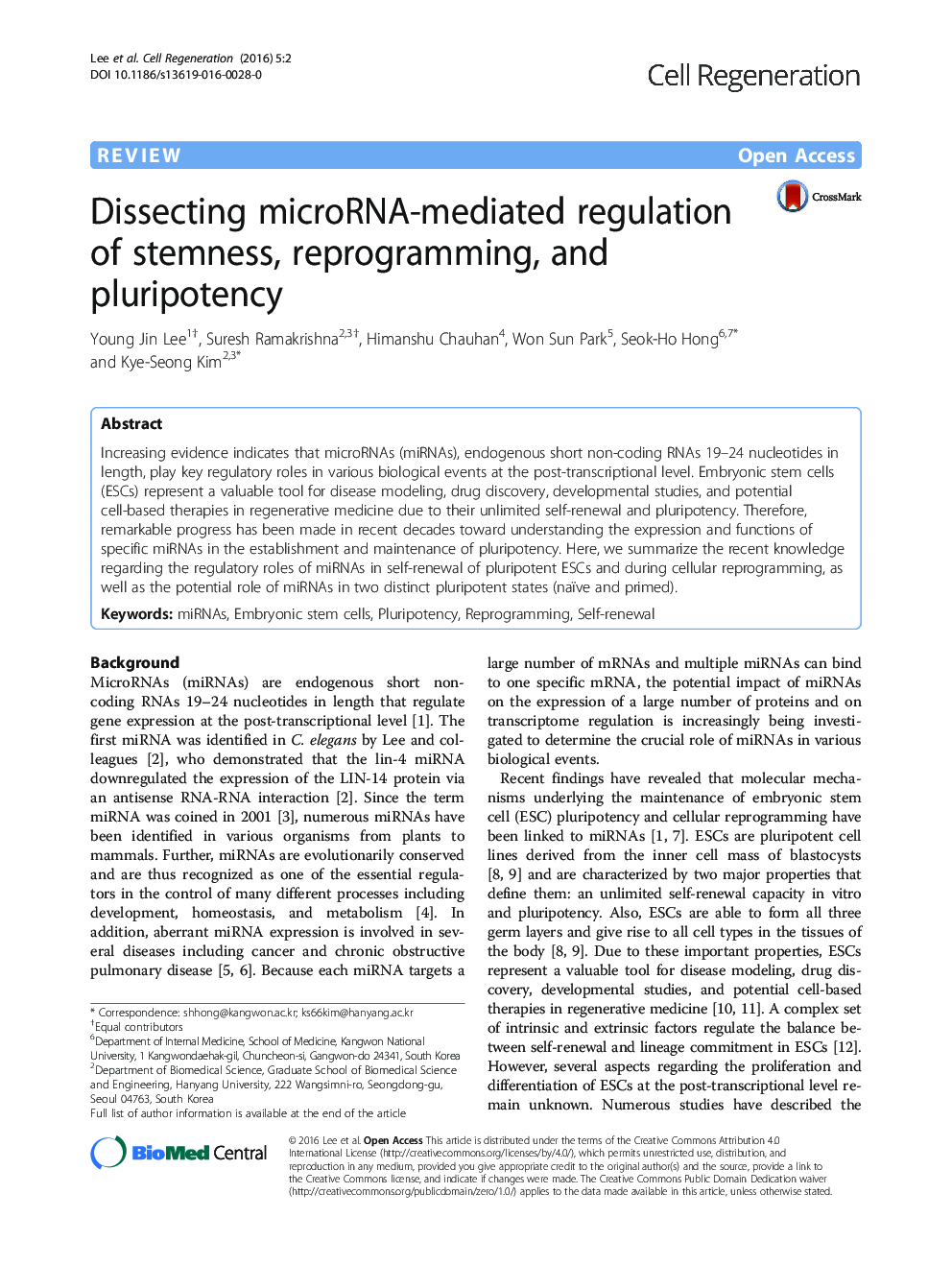| Article ID | Journal | Published Year | Pages | File Type |
|---|---|---|---|---|
| 8920126 | Cell Regeneration | 2016 | 10 Pages |
Abstract
Increasing evidence indicates that microRNAs (miRNAs), endogenous short non-coding RNAs 19-24 nucleotides in length, play key regulatory roles in various biological events at the post-transcriptional level. Embryonic stem cells (ESCs) represent a valuable tool for disease modeling, drug discovery, developmental studies, and potential cell-based therapies in regenerative medicine due to their unlimited self-renewal and pluripotency. Therefore, remarkable progress has been made in recent decades toward understanding the expression and functions of specific miRNAs in the establishment and maintenance of pluripotency. Here, we summarize the recent knowledge regarding the regulatory roles of miRNAs in self-renewal of pluripotent ESCs and during cellular reprogramming, as well as the potential role of miRNAs in two distinct pluripotent states (naïve and primed).
Keywords
IPSCsSIRT6DGCR8ICMDnmtDiGeorge syndrome critical region gene 8ECCSTGFBR2sirtuin 6miRNAs3′ UTR3′-untranslated regionDNA methyltransferaseReprogrammingInner cell massESCRISCSelf-renewalmicroRNAsEmbryonic stem cellInduced pluripotent stem cellsembryonic carcinoma cellsEmbryonic stem cellsRNA-Induced Silencing ComplexBMPmesenchymal to epithelial transitionMETPluripotencyBone morphogenetic proteinArgonaute proteins
Related Topics
Life Sciences
Biochemistry, Genetics and Molecular Biology
Biochemistry
Authors
Young Jin Lee, Suresh Ramakrishna, Himanshu Chauhan, Won Sun Park, Seok-Ho Hong, Kye-Seong Kim,
